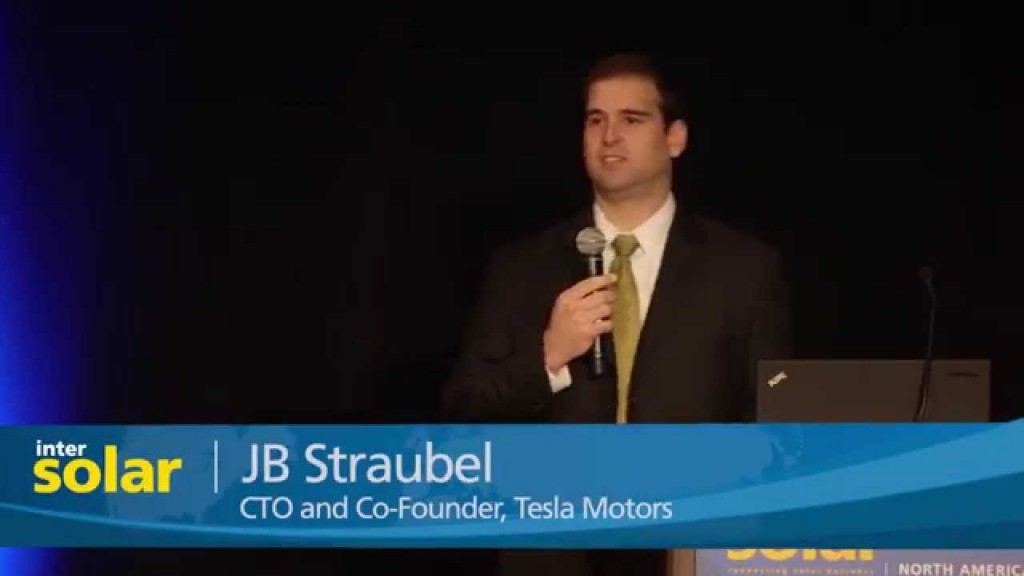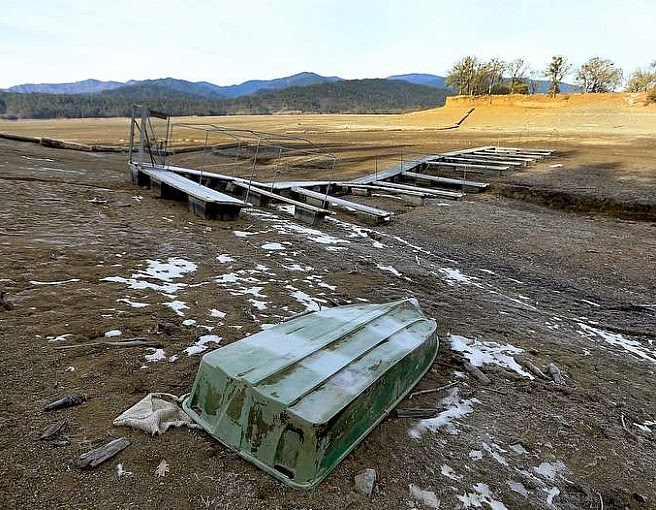This week the two top stories of the Intersolar US 2015 trade show were – Tesla Motors CTO JB Straubl giving the Keynote address, giving the Solar industry fair warning the Solar City / Tesla Motors duo was planning to shake things up – and that in the previous 12 months California had installed 3+ gigawatts of Solar capacity, and that solar power is what’s keeping the lights on in drought-stricken California that can’t produce much hydro-electric power right now. While the current adoption rate for solar power is miniscule compared to incumbent fossil fuel systems, just like electric vehicle adoption is minimal compared to gasser vehicles, the growth rate is very rapid and the dropping prices for these technologies portends good things in the coming years.
The conference organizers published a highlight reel of the Intersolar US 2015 opening ceremony in which all that was announced. It’s too bad the full speech by JB Straubl wasn’t published because he really laid out for them Tesla’s ambitious plans, and what the effect will be on the Solar industry.
I’ve written about those plans here earlier
- Tesla will shortly have 1+ million cars on the road (perhaps 2020 or 2021), up from 50,000+ today
- At 1 million cars, they’ll have 70 gigaWatt-hours of storage capacity on the road
- Getting to 1 million EV’s necessitates building the Gigafactory, with a capacity (in one facility) to produce as much lithium-ion batteries as the rest of the industry combined produced in 2013
JB Straubl explained that those factoids added up to a plan by Tesla Motors to get into the energy storage business, and the launch of Tesla Energy a couple months ago. The Tesla Energy storage units allows the company to reuse their battery pack technology to create new lines of business, and to give a second customer for cells produced at the Gigafactory. Namely – Tesla Cars, and Tesla Energy Storage
And, oh-by-the-way, Tesla’s sister company Solar City is also building its own gigafactory to produce solar panels.
The Tesla Energy storage units will drive down the price for energy storage – not just home sized energy storage, but grid scale energy storage. The picture here shows a 100 megaWatt-hour energy storage facility sized to provide 25 megaWatts of energy for four hours, integrated with a regular substation.
There is tremendous potential for such a facility to earn lots of money while making renewable power feasible. For example, electricity arbitrage or buying electricity off the grid when it’s cheap and selling electricity to the grid when its expensive. And by the way consider the feasibility of co-locating a solar array at such a facility, simply by putting a solar canopy over the top.
Combining renewable energy and energy storage in the same facility means generating the renewable energy when its possible to do so, then selling the electricity when it’s more economically advantageous. Current renewable energy facilities (with no energy storage) must sell the electricity they generate at the time when it’s generated. The grid may not be ready to take that energy at that moment, and simply refuse to take the energy.
Tesla Motors envisions hundreds of these facilities scattered around the country, and that the price will fall dramatically once the gigafactory is running. Combined with the rapidly falling price for solar power systems … while the real target is the fossil fuel power industry, I wonder how this will play for the rest of the solar industry.
For their part Tesla Energy is integrating their storage systems with products from incumbent companies in the field – in other words, Solar City doesn’t have a monopoly on working with Tesla. It means Tesla will have a world-wide list of partner companies in countries outside Solar City’s operation areas, and it means Tesla will be free to work with grid operators and other utility scale renewable energy companies.
What stood out for me with JB’s presence was – how utterly audacious and ambitious was Tesla’s plan – and how much confidence he had that Tesla Motors would pull it off. Yes the company has a history of missing deadlines, but by-and-large they have done what they set out to do.
JB Straubl was followed by Bernadette Del Chiaro, the Executive Director of CAL SEIA (California Solar Energy Industry Association). While she didn’t have such an audacious topic to discuss, she did have a couple things of importance to say.
Namely – Over the previous 12 months California had installed 3 GigaWatts of solar power capacity. It’s a drop in the bucket still, but it’s a big step forward. Solar power in California is beginning to erase the need for fossil fuel power during the daytime, which is giving California’s utility companies an interesting challenge to handle. More importantly the solar power capacity means California has had a continuing supply of electricity even though the drought would say otherwise.
California is in a historic drought – 5 years or so of much lower rainfall than is “normal”. The effect this has on the electricity supply is non-obvious, but here goes.
A large portion of California’s electricity comes from hydro-electric systems, both reservoirs and “run-of-river” systems. One tactic California has used is “pumped hydro” energy storage, meaning there’ll be a couple reservoirs on the same river at different altitudes. At night they’ll take cheap electricity off the grid to pump water uphill to the upper reservoir, and during the day releasing the water to generate electricity.
The problem with relying on hydro-electric power is – what if there’s no water.
That’s the scene in reservoirs around the state. No water where there had been water, which was utilized to generate electricity, to irrigate crops, to whet our whistle, and for recreation.
The good news is that solar power made up for the loss of hydro-electric power. The bad news is that California’s drought shows no sign of abating. It doesn’t matter if we have sufficient electricity if we have don’t have enough water, but that’s a story for another day.
- Is there enough Grid Capacity for Hydrogen Fuel Cell or Battery Electric cars? - April 23, 2023
- Is Tesla finagling to grab federal NEVI dollars for Supercharger network? - November 15, 2022
- Tesla announces the North American Charging Standard charging connector - November 11, 2022
- Lightning Motorcycles adopts Silicon battery, 5 minute charge time gives 135 miles range - November 9, 2022
- Tesla Autopilot under US Dept of Transportation scrutiny - June 13, 2022
- Spectacular CNG bus fire misrepresented as EV bus fire - April 21, 2022
- Moldova, Ukraine, Georgia, Russia, and the European Energy Crisis - December 21, 2021
- Li-Bridge leading the USA across lithium battery chasm - October 29, 2021
- USA increasing domestic lithium battery research and manufacturing - October 28, 2021
- Electrify America building USA/Canada-wide EV charging network - October 27, 2021















